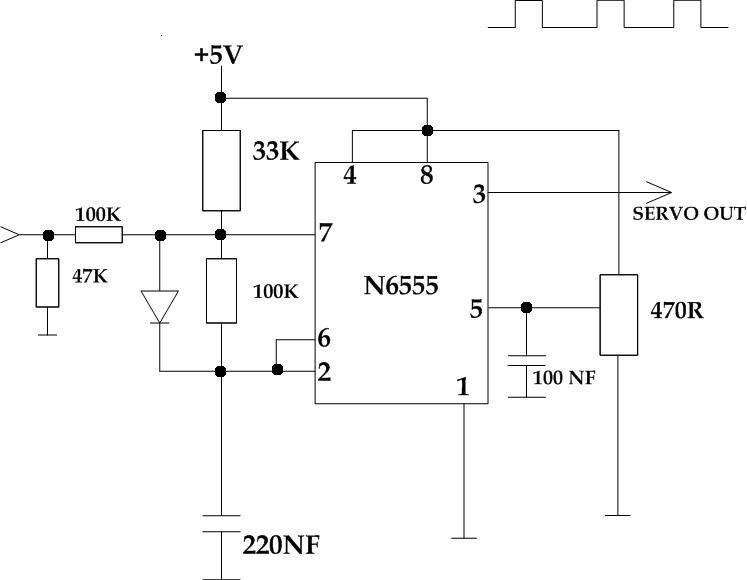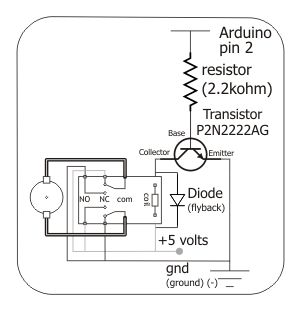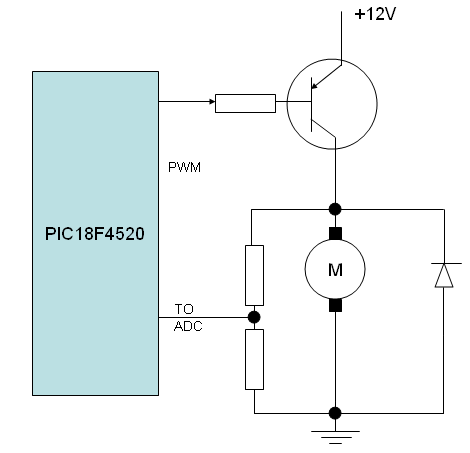
Controlling a Mazda Car Using an iPhone

This project demonstrates how a car can be controlled remotely from anywhere in the world by accessing its diagnostic systems and onboard web server. The goal is to keep the car continuously connected to the Internet 24/7, even when not in operation, without draining the car's battery by using a low-power computer. The user can start the engine, unlock the trunk, lock/unlock the doors, and access all vehicle diagnostics via an iPhone. The selected vehicle is a Mazda RX-8, which was released in 2004 and features a 6-speed manual transmission with a 1.3L 13B-MSP RENESIS engine. The computer used for this project is an Alix-1, which consumes minimal power while being capable of running a full Linux distribution. A mounting frame was constructed to fit the Alix-1, a USB hub, a charging circuit, and a deep-cycle 28A/h sealed lead-acid battery into the recess at the base of the RX-8's boot. The SLA battery is charged by an intelligent battery charger, ensuring that the Alix-1 can operate continuously. Whenever the car is running, the charger replenishes the battery. The charger is effective for this application, despite being designed for deep-cycle batteries. The Alix-1 is permanently connected to the On-Board Diagnostics (OBD) port under the dashboard, allowing it to poll dozens of performance parameters such as speed, RPM, intake manifold temperature, engine load, fuel level, fuel pressure, fuel injection mode, timing, and more every few seconds. A MySQL database is utilized to store all data indefinitely. Remote diagnostics require continuous Internet connectivity, which the Alix-1 facilitates by allowing software control of engine start/stop, accessory power, door locks, and trunk release through a custom ignition manager based on an Arduino development board. Authorized laptops can connect via Wi-Fi to access vehicle management functions, as the car acts as a mobile access point. GPS data is logged using a USB GPS receiver, enabling the correlation of engine management parameters with geographical locations, generating tracks of previous journeys, and providing directional information. An RFID reader is mounted on the back right window to unlock the car and start the engine automatically upon detecting an authorized RFID tag. The RFID implant used for unlocking the house door is demonstrated in a video. A password-protected web interface optimized for full-screen display on an iPod Touch or iPhone, using the SOPODS full-screen web browser, is provided by the car's web server. The web interface includes Control, Telemetry, and Location screens. The web interface accessed from an iPod Touch is briefly shown in a video, with a more professional version available in another video. For the audio system, the Alix-1 can inject audio directly into the BOSE head unit by modifying it. The head unit was opened, and input leads were soldered to the CD player circuit board since the BOSE sound system in the RX-8 lacks a line-in connection. The headphone output from the Alix-1 is connected through the head unit, allowing any sound played by the Alix-1 to be output through the sound system when the CD is selected, enabling music playback and voice alerts.
The project integrates several advanced electronic components and systems to achieve remote control of the Mazda RX-8. The Alix-1 computer serves as the central processing unit, running a full Linux distribution that supports various functionalities. The low power consumption of the Alix-1 is critical to maintaining battery life, allowing it to operate continuously without depleting the vehicle's power source.
The custom mounting frame is designed to securely house the Alix-1 and associated components, ensuring stability and ease of access for maintenance. The intelligent battery charger plays a significant role in this setup, as it maintains the SLA battery's charge while the vehicle is in use and ensures that the Alix-1 remains operational when the car is parked.
The vehicle's OBD port provides a wealth of diagnostic information that is crucial for monitoring performance and troubleshooting any issues. The integration of a MySQL database allows for extensive data logging, enabling the user to analyze vehicle performance over time. This data can be invaluable for both personal use and potential future modifications to the vehicle.
Remote access to the vehicle's systems is facilitated by a custom ignition manager, which uses an Arduino development board to interface with the Alix-1. This setup not only allows for remote diagnostics but also enhances convenience by enabling features such as engine start/stop and door lock control from a smartphone.
The addition of GPS capabilities allows for advanced tracking and logging of vehicle movements, providing users with insights into driving patterns and locations. The RFID system enhances security and ease of access, allowing authorized users to unlock the vehicle and start the engine without needing traditional keys.
The web interface designed for mobile devices is an essential feature, providing users with a straightforward and intuitive way to interact with the vehicle's systems. This interface is optimized for performance and usability, ensuring that users can access critical functions quickly and efficiently.
Finally, the integration of the Alix-1 with the vehicle's audio system enhances the overall user experience, allowing for seamless playback of audio and voice alerts through the existing sound system. This modification not only adds functionality but also enhances the enjoyment of the driving experience. Overall, this project exemplifies the potential for modern technology to enhance vehicle control, diagnostics, and entertainment in a compact and efficient manner.This hack illustrates how a car can be controlled from anywhere in the world by tapping into the disgnostic systems and onboard webserver of the car. The objective is to keep the car live and connected to the Internet 24G—7 even when not being driven.
It should run continuously without flattening the car battery by critically selecting a low-po wer computer. Also, the user should be able to start the engine, pop the trunk, lock/unlock, and view all vehicle diagnostics from his iPhone. The chosen car was a Mazda RX-8 as shown in the image below. It was released in 2004 and consists of 6-speed manual transmission with a 1. 3L 13B-MSP RENESIS engine. The computer used in this hack is an Alix-1 which draws very little power but is fast enough to run a full Linux distribution system.
To fit into a recess in the base of the RX-8 boot, a mounting frame was assembled. It has room to mount the Alix-1, a USB hub, a charge circuit, and a deep-cycle 28A/h sealed lead acid battery. The SLA battery is charged using an intelligent battery charger so it can continuously run the Alix-1.
Whenever the car is running, the charger tops it up. The charger works perfectly in this application although it was designed for topping up deep-cycle batteries. Shown in the image below is the Alix-1 mounted in a custom subframe inside the boot of RX-8. To run diagnostics on the engine management system, a laptop is usually plugged by a mechanic to the On-Board Diagnostics (OBD) port under the dash.
The Alix-1 is permanently connected to the port on this RX-8 and dozens of parameters about vehicle performance including speed, RPM, intake manifold temperature, engine load, fuel level, fuel pressure, fuel injection mode, timing and many other items are polled to the ECU every few seconds. A MySQL database is used to store all data indefinitely. Shown in the photo below in a conference where the integration of the Alix-1 with the existing electronics was explained.
To be able to access the car for remote diagnostics, it should be continuously connected to the Internet. The Alix-1 is allowed to have software control of engine start/stop, accessory power, door lock/unlock, and boot release by building a custom ignition manager based on an Arduino development board.
Through Wi-Fi, it allows authorized laptops to associate with it to access vehicle management functions directly since the car acts as a mobile access point. The GPS values were stored using a USB GPS receiver that allows the data logging system. It has every set of engine management parameters which can be used to match engine events to locations, generate tracks showing previous journeys, or display direction information.
The back right window of the car has a mounted RFID reader which unlocks the car and starts the engine automatically when it detects an authorized FRID tag. The RFID implant being used to unlock the front door of the house is demonstrated in the video below.
A password-protected web interface optimized for full-screen display on an iPod Touch or iPhone running the SOPODS full screen web browser is provided by the webserver of the car. The 3 screens of the web nterface include Control, Telemetry, and Location. The web interface accessed from an iPod Touch is briefly demonstrated in the video below. A more professional version was created on the next video. For the audio system, the Alix-1 is allowed to inject audio directly into it by modifying the BOSE head unit shown in the below image.
The head unit was opened up and soldered input leads to the CD player circuit board since the BOSE sound system in the RX-8 has no line in connection. Connected through the head unit was the headphone output from the Alix-1. Any sound played by the Alix-1 is injected into the head unit when the CD is selected. Through the existing sound system, the Alix-1 can play music and issue voice alerts. 🔗 External reference
The project integrates several advanced electronic components and systems to achieve remote control of the Mazda RX-8. The Alix-1 computer serves as the central processing unit, running a full Linux distribution that supports various functionalities. The low power consumption of the Alix-1 is critical to maintaining battery life, allowing it to operate continuously without depleting the vehicle's power source.
The custom mounting frame is designed to securely house the Alix-1 and associated components, ensuring stability and ease of access for maintenance. The intelligent battery charger plays a significant role in this setup, as it maintains the SLA battery's charge while the vehicle is in use and ensures that the Alix-1 remains operational when the car is parked.
The vehicle's OBD port provides a wealth of diagnostic information that is crucial for monitoring performance and troubleshooting any issues. The integration of a MySQL database allows for extensive data logging, enabling the user to analyze vehicle performance over time. This data can be invaluable for both personal use and potential future modifications to the vehicle.
Remote access to the vehicle's systems is facilitated by a custom ignition manager, which uses an Arduino development board to interface with the Alix-1. This setup not only allows for remote diagnostics but also enhances convenience by enabling features such as engine start/stop and door lock control from a smartphone.
The addition of GPS capabilities allows for advanced tracking and logging of vehicle movements, providing users with insights into driving patterns and locations. The RFID system enhances security and ease of access, allowing authorized users to unlock the vehicle and start the engine without needing traditional keys.
The web interface designed for mobile devices is an essential feature, providing users with a straightforward and intuitive way to interact with the vehicle's systems. This interface is optimized for performance and usability, ensuring that users can access critical functions quickly and efficiently.
Finally, the integration of the Alix-1 with the vehicle's audio system enhances the overall user experience, allowing for seamless playback of audio and voice alerts through the existing sound system. This modification not only adds functionality but also enhances the enjoyment of the driving experience. Overall, this project exemplifies the potential for modern technology to enhance vehicle control, diagnostics, and entertainment in a compact and efficient manner.This hack illustrates how a car can be controlled from anywhere in the world by tapping into the disgnostic systems and onboard webserver of the car. The objective is to keep the car live and connected to the Internet 24G—7 even when not being driven.
It should run continuously without flattening the car battery by critically selecting a low-po wer computer. Also, the user should be able to start the engine, pop the trunk, lock/unlock, and view all vehicle diagnostics from his iPhone. The chosen car was a Mazda RX-8 as shown in the image below. It was released in 2004 and consists of 6-speed manual transmission with a 1. 3L 13B-MSP RENESIS engine. The computer used in this hack is an Alix-1 which draws very little power but is fast enough to run a full Linux distribution system.
To fit into a recess in the base of the RX-8 boot, a mounting frame was assembled. It has room to mount the Alix-1, a USB hub, a charge circuit, and a deep-cycle 28A/h sealed lead acid battery. The SLA battery is charged using an intelligent battery charger so it can continuously run the Alix-1.
Whenever the car is running, the charger tops it up. The charger works perfectly in this application although it was designed for topping up deep-cycle batteries. Shown in the image below is the Alix-1 mounted in a custom subframe inside the boot of RX-8. To run diagnostics on the engine management system, a laptop is usually plugged by a mechanic to the On-Board Diagnostics (OBD) port under the dash.
The Alix-1 is permanently connected to the port on this RX-8 and dozens of parameters about vehicle performance including speed, RPM, intake manifold temperature, engine load, fuel level, fuel pressure, fuel injection mode, timing and many other items are polled to the ECU every few seconds. A MySQL database is used to store all data indefinitely. Shown in the photo below in a conference where the integration of the Alix-1 with the existing electronics was explained.
To be able to access the car for remote diagnostics, it should be continuously connected to the Internet. The Alix-1 is allowed to have software control of engine start/stop, accessory power, door lock/unlock, and boot release by building a custom ignition manager based on an Arduino development board.
Through Wi-Fi, it allows authorized laptops to associate with it to access vehicle management functions directly since the car acts as a mobile access point. The GPS values were stored using a USB GPS receiver that allows the data logging system. It has every set of engine management parameters which can be used to match engine events to locations, generate tracks showing previous journeys, or display direction information.
The back right window of the car has a mounted RFID reader which unlocks the car and starts the engine automatically when it detects an authorized FRID tag. The RFID implant being used to unlock the front door of the house is demonstrated in the video below.
A password-protected web interface optimized for full-screen display on an iPod Touch or iPhone running the SOPODS full screen web browser is provided by the webserver of the car. The 3 screens of the web nterface include Control, Telemetry, and Location. The web interface accessed from an iPod Touch is briefly demonstrated in the video below. A more professional version was created on the next video. For the audio system, the Alix-1 is allowed to inject audio directly into it by modifying the BOSE head unit shown in the below image.
The head unit was opened up and soldered input leads to the CD player circuit board since the BOSE sound system in the RX-8 has no line in connection. Connected through the head unit was the headphone output from the Alix-1. Any sound played by the Alix-1 is injected into the head unit when the CD is selected. Through the existing sound system, the Alix-1 can play music and issue voice alerts. 🔗 External reference





